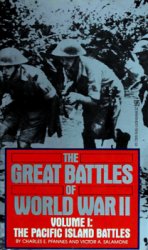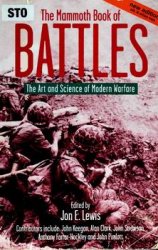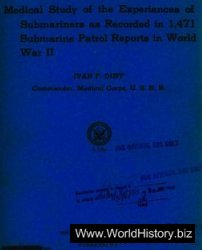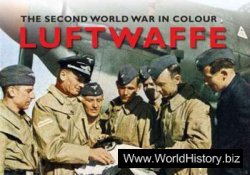At the CASABLANCA CONFERENCE OF January 1943, Churchill and Roosevelt committed themselves to mounting a cross-Channel invasion of France in the spring of 1944. While the main effort in 1943 was concentrated on the Mediterranean theatre, British Major General Sir Frederick Morgan was appointed on 12 April 1943 as Chief of Staff to the Supreme Allied Commander (COSSAC). At the head of an Anglo-American team, Morgan was responsible for drawing up plans for a full-scale invasion in the spring of 1944, codenamed Overlord. In addition to planning Overlord, COSSAC was ordered to draw up a series of deceptive plans that would keep alive the possibility of a cross-Channel attack during the summer of 1943.
Previously, in the build up to Torch in 1942, the fledgling London Controlling Section had sought to keep German forces from being redeployed from north and western Europe to the Mediterranean by indicating operations against France (Operation Overthrow) and Norway (Operation Solo I). These threats were maintained and adapted to fulfil Morgan’s objectives, and became known under the umbrella name Plan Cockade. This was a series of schemes to deter the Germans from detaching troops either to the Mediterranean or to the Russian Front, by threats to northern France and Norway. Expanding on what had already been attempted, Cockade was supposed to culminate in an ambitious mock invasion of the Pas de Calais, the narrowest crossing point from England to France. In addition to tying down German troops, it was hoped this feint would draw the Luftwaffe out of its bases and into a pitched battle over the English Channel.
With the assistance of the LCS, these cover plans were drawn up by Colonel John Jervis-Read, who had been put in charge of a section under COSSAC called Ops. B. Unfortunately Jervis-Read was given nothing like the access, priority or resources available to Dudley Clarke’s A Force, the body which Ops. B was theoretically meant to emulate. It appears that Morgan viewed A Force with some suspicion as a ‘private army’ and had no intention of allowing anything similar to develop in his own neck of the woods. Jervis-Read was more or less a one-man show, forced to beg what help he could from other service departments. It was not an arrangement with which Colonel Bevan was satisfied.1
The most important element of Cockade was Plan Starkey, an Anglo-Canadian attack on the port of Boulogne scheduled for between 8 and 14 September 1943. According to the deception plan, after the bridgehead was established by Starkey, a second attack would follow, codenamed Wadham. This time an American force would attack the port of Brest in Brittany, supported by the arrival of troops sailing directly from the United States. In the grand deception plan, the Allies would cancel Starkey and Wadham at the last minute and instead put all their resources into an invasion of Norway by five divisions, codenamed Tindall.
In the original version of Starkey, the infantry contingent was to be complemented by a strong naval force that included two older battleships, over 90 other naval vessels, whatever merchant ships could be found, and a large fleet of landing craft. When this shopping list was presented to the First Lord of the Admiralty Admiral, Sir Dudley Pound, he refused to allow his battleships to join in. The French coast along the Pas de Calais was bristling with heavy-calibre German coastal batteries. It was very unlikely the battleships would be able to knock any of them out, but they would almost certainly take fire and sustain damage themselves. No matter how much the Navy approved of deception, losing two battleships for no reward would be a hard thing to explain to the British public. There was also a problem with the number of landing craft available. With an urgent need for landing craft in the Mediterranean, only 360 could be mustered on the south coast. To these were added 100 dummy assault landing craft, called ‘Wetbobs’, and 75 dummy tank landing craft, known as ‘Bigbobs’. The name ‘Wetbob’ came from Eton College and signified someone in one of the water sports teams, as opposed to those in land-based sports teams, who were called ‘Drybobs’. ‘Bigbobs’ were so called because they were bigger. According to Sir Freddy Morgan, the prototypes of these decoys were first constructed on the London Metropolitan Water Board reservoir near Shepperton.2 These dummy craft were very convincing, even from close range, and were embellished with small details like smoke coming from non-existent engines and laundry hung on washing lines by their equally bogus crews. Even if there were not enough landing craft to suggest a full-scale invasion, when the decoys were mixed in with the real thing, the undertaking appeared larger than the Dieppe raid.
With the prospect of delivering the Luftwaffe a bloody nose, Fighter Command appeared very enthusiastic about the mission. Between the British and American commands, 60 fighter squadrons were earmarked for the planned battle with the Luftwaffe. Unfortunately, without the battleships acting as a lure, Fighter Command did not believe the mission had
Much chance of success. Further scorn came from Arr Chief Marshal Sir Arthur ‘Bomber’ Harris. When asked for several thousand heavy bomber sorties in support of Starkey, he protested very strongly and in the end permitted only inexperienced crews and medium bombers not capable of hitting targets in Germany to take part. Harris did not like anyone interfering with his master plan for bringing about a German surrender through area bombing, especially when Fighter Command appeared to stand most chance of g aining credit from the mission.
There was also the problem of the French Resistance. It would be catastrophic if the Resistance believed that the invasion attempt was genuine and came out en masse, only to be left in the lurch. So, while on the one hand the Allies promoted the idea of an invasion, they were very careful to tell the Resistance not to come out unless they received the official green light from London. It was a similar story for the British press. Reporters would no doubt get wind that something big was being planned, and it would be terrible for public morale if Starkey was reported as a real invasion attempt that had failed. Everything about the operation was a tightrope act performed in a blustery gale of inter-service politics.
Despite the disappointments and internal politics, Starkey pushed on. To complement the preparations, Colonel Turner’s department was called in to provide camouflage and decoys for the mission. Lighting was used to simulate traffic and divert bombs away from the major Channel ports, including Southampton, Portsmouth, Newhaven and Dover. At the same time military camps were simulated with lighting effects and dummy installations. The airfields were also packed with somewhere in the region of400 dummy gliders and large numbers of decoy Spitfires and Hurricanes. Radio deception was also used to simulate the chatter of the formations earmarked for Starkey, many of which were entirely fictional additions to the order of battle.
Although German reconnaissance flights did spot some of the preparations, the best way of drawing the Germans’ attention to Starkey was again through special means, in particular the Twenty Committee’s double agents. Of those most involved, Tricycle is already well enough known. Having re-established his credentials after the fiasco of his mission to America, in July 1943 he again returned to Lisbon and took a mass of information on the supposed Allied plans, all of which increased his standing with the Germans. His reports were augmented by those of Gelatine, his sub-agent who reported on invasion gossip picked up at society gatherings.
These reports were echoed by those of another socialite codenamed Bronx. The daughter of the Peruvian charge d’affaire in Vichy France, Elvira
Chaudoir had lived in England since the beginning of the war. She lived life on the wild side, attending weekend parties where she rubbed shoulders with members of the government and aristocracy. Bronx kept a flat in Mayfair, ran up considerable gambling debts and fully explored her voracious sexual appetites with men and women alike. Recruited by Claude Dansey, the deputy head of MI6, Bronx was sent to visit her parents inVichy France, where she allowed herself to be recruited by a German agent who offered her ?100 a month to supply economic and political intelligence. This payment was disguised as an alimony payment from the husband she was divorcing. When she returned to the United Kingdom she revealed her recruitment by and love affair with the German agent. After some deliberation, she was enrolled as a double agent.
Other new faces in the XX set up included a trio of businessmen: Hamlet, Mullet and Puppet. The instigator of this network was Hamlet, a halfJewish Austrian who had property in Germany until it was confiscated in 1936. After a brief period of imprisonment, Hamlet went to Italy and sent his children to a school in England. He then moved to Belgium where he had a business. It was in Belgium that he agreed to work for the Abwehr, albeit under pain of being handed over to the Gestapo. He was sent to Lisbon and became friends there with an Englishman who had formerly worked in Belgium for an insurance firm. Hamlet asked this new friend, whom the British codenamed Mullet, to take some valuables to England on his behalf, and to act as his business representative there. He also asked him if he could identify anyone who might be sympathetic to an approach by Germans in the event of the Nazis losing power, presumably after a coup.
Pointing out his Jewish heritage, Mullet questioned Hamlet about why he was working for the Germans. Hamlet had quite a plausible excuse, claiming to be building up an intelligence network that would show German generals that they had lost the war and should ask for peace. He claimed that he had direct access to Canaris and that through a friend he could contact General von Falkenhausen, the military governor of Belgium. The case now came to the attention of the British secret service and when Mullet went back to Lisbon in December 1942 he took an SIS officer with him. Hamlet was interviewed and it soon became apparent that most of his claims were false. However, the link to von Falkenhausen turned out to be genuine and this go-between received the codename Puppet. With Hamlet’s children a guarantor of his loyalty, the Twenty Committee decided to risk taking on the network and added them to the stable. With Mullet acting as the contact man in Britain, Hamlet was able to report on matters relating to the City and government throughout 1943.
The surest means of reporting was still Garbo. With order restored to his case following his wife’s depression, Garbo soon became bombarded with questions about Allied intentions in north-west Europe. After reporting that troop concentrations and exercises were being carried out in Wales, Garbo supposedly travelled to Scotland in August in order to investigate rumours about an attack on Norway. While apparently in Scotland, Garbo’s notional sub-agents began reporting large troop build ups around Southampton and that assault craft were being collected in the Channel ports. Believing this significant, Garbo raced south and reported that he had personally discovered seven divisions in the Brighton area. Hedging his bets, Garbo cautioned that this build up might be nothing more than a dummy run for a future operation. On the other hand he would not put the idea to bed completely, as the unexpectedly swift collapse of the Italians in Sicily might have led to a last-minute change in Allied planning. On 5 September Garbo received information from his agents that troops were concentrating for an assault three days later.
To back up Garbo’s messages, troops were moved to the south coast along with Colonel Turner’s dummy fighters and gliders. There was also a number of Commando raids, which were supposed to capture prisoners in the landing areas. Of the 14 raids planned, only eight actually took place and all of them were unsuccessful. In fact, the only captive brought back across the Channel was a sample of barbed wire that one of the teams had come across.
In the two weeks up to 8 September the Allied air forces began stepping up attacks on Calais. Unfortunately bad weather intervened and many of the missions were cancelled. The weather continued to play a part and, when 8 September came, the feint was postponed for 24 hours. On 8 September Garbo reported that the troops were being confined to barracks and were being issued four-day ration packs, indicating that the assault was imminent. Next day the troops were marched along the hards to their landing craft. Once there, they turned about, and with disappointed looks on their faces, trudged back to camp, with the exception of the anti-aircraft gunners, who remained to protect the boats from the expected droves of German aircraft. A force of around 30 ships then assembled off Dungeness and headed towards France preceded by a screen of mine-sweepers. Overhead a force of 72 fighters flew over the convoy, accompanying medium bombers, which attacked the German coastal batteries, without much success.
When the force was just ten miles outside Boulogne the ships stopped and waited for the German response. Nothing happened. The coastal artillery did not open up and the Luftwaffe stayed on the ground. According to Morgan’s account of the day, the only response obtained was a slightly
Confused German subaltern who was overheard radioing his commander asking what all the fuss in the Channel was about.3
Any notions of a great aerial battle came to nothing. At 9am the convoy made smoke and turned for home. Later that day Garbo reported that the operation had been suspended and the troops were returning to barracks. Without the aerial battle the Allies were left in a sticky situation. Something had to be told to the press before the Germans came out and said they had ‘scared off’ a British invasion attempt. In the end the press were told that a full-scale rehearsal had taken place and valuable lessons had been learned for future operations.
The main remaining hope of deceiving von Rundstedt in France was Plan Wadham, the attack on Brittany set for 22 September. Unfortunately this was another flop. The Germans showed absolutely no sign of taking the bait and Morgan asked for it to be cancelled.
With Starkey and Wadham cancelled, all efforts were put into implementing Plan Tindall. When the attacks on northern France failed to materialize, the excuse given by the double agents was that resources for it had been diverted to invade northern Norway and to capture the airfield at Stavanger. Four divisions were to go in by sea, while an airborne division was earmarked for the attack. Detailed plans were drawn up, all of which were dutifully leaked by the double agents, who suggested a landing would take place between 6 and 12 September. This time the Germans did take some of the bait, and no troops were removed from Norway to reinforce the Mediterranean. In that sense, four training divisions in Scotland successfully held down three times their number of trained German troops.
On balance, it took great optimism not to be disheartened by the implementation of Cockade. The deceptions against France had clearly failed. The Nazi High Command had made up its mind that the Allied attacks in 1943 would be confined to the Mediterranean theatre. As a mark of how little attention was paid to Starkey, von Rundstedt was stripped of ten divisions to stabilize the situation in Italy. There was, however, a small plus to this exercise. Although the German High Command was unimpressed with the British plans, the preparations being carried out in Britain filled von Rundstedt with a sense of foreboding. He concluded that the whole operation had been a ‘large-scale preliminary rehearsal for a genuine attack against our west coast’.4 The embarkation practice and the real deployment of minesweepers and aircraft could only be a portent of something much larger to come. True enough, General Morgan went away happy that his troops had practised for an embarkation and that they had appeared quite up for a scrap.
The planning of Wadham had proved similarly useful. Only a few Americans involved with the planning knew that this attack with five divisions was a bluff. As the troops began to muster in south-west England, there was chaos as planners were faced with very real logistical problems and struggled to make their final preparations for an assault they believed was going ahead. The lessons learned by US planners during this operation became invaluable when it came to organizing the real show the following summer.
Perhaps at best, like many deception operations carried out by the Allies, it could be said that Cockade had done no harm. There had been the usual grumblings from service chiefs over the use of resources for ‘pointless’ operations, but at least no double agents had been blown and the Germans appeared to accept the inflated Allied order of battle. In that sense it proved a useful learning experience for the following year.




 World History
World History









